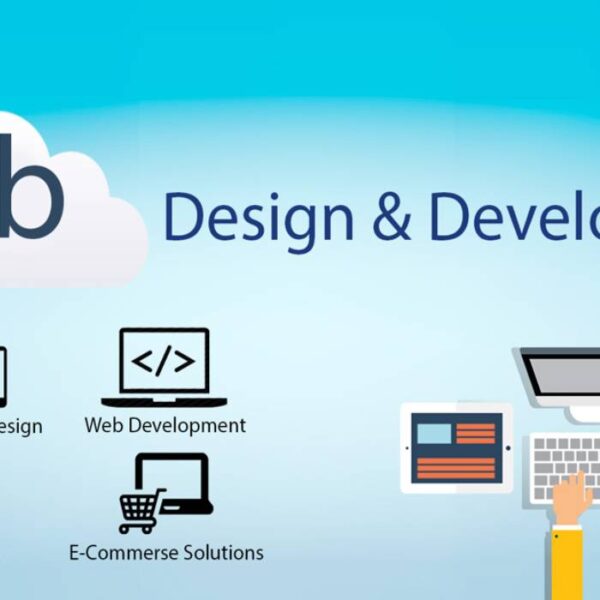
Responsive web design is essential for creating websites that provide optimal user experiences across various devices. To achieve this, web developers rely on a range of tools and frameworks that streamline the process and ensure high-quality results. This article explores the top tools and software for responsive web design, reviews popular frameworks like Bootstrap and Foundation, highlights plugins and extensions, provides tips for effective tool selection and usage, and discusses the benefits of working with a responsive web development company.
Overview of Top Tools and Software for Responsive Web Design
- Adobe XD: A powerful design tool that allows designers to create wireframes, prototypes, and high-fidelity designs for responsive websites. Adobe XD offers features like responsive resize, artboard templates for various devices, and seamless integration with other Adobe Creative Cloud tools.
- Sketch: A vector-based design tool popular among web and UI/UX designers. Sketch provides responsive design capabilities through features like smart layout, resizing constraints, and artboards for different screen sizes.
- Figma: A collaborative interface design tool that supports responsive design with its flexible layout grid, auto-layout feature, and design system management. Figma’s real-time collaboration capabilities make it ideal for teams working on responsive web projects.
- InVision: A digital product design platform that includes tools for prototyping, collaboration, and design system management. InVision’s responsive design features include adaptive layouts and breakpoints.
- Webflow: A web design and development tool that allows designers to create responsive websites visually. Webflow’s design interface supports CSS grid, flexbox, and responsive breakpoints, making it easier to create adaptive layouts.
Detailed Review of Popular Frameworks: Bootstrap and Foundation
- Bootstrap:
- Overview: Bootstrap is one of the most widely used front-end frameworks for building responsive websites. It provides a comprehensive set of CSS and JavaScript components, a responsive grid system, and extensive documentation.
- Features:
- Responsive Grid System: Bootstrap’s 12-column grid system allows for flexible layouts that adapt to different screen sizes.
- Pre-built Components: A wide range of UI components, such as buttons, modals, and navigation bars, help speed up development.
- Customization: Bootstrap offers customization options through Sass variables and mixins, allowing developers to tailor the framework to their needs.
- Community Support: A large and active community provides extensive resources, plugins, and third-party themes.
- Pros: Easy to use, well-documented, extensive component library, active community.
- Cons: Can result in bloated code if not used carefully, may require customization to avoid a generic look.
- Foundation:
- Overview: Foundation is a responsive front-end framework developed by Zurb. It offers a flexible grid system, robust components, and a mobile-first approach to design.
- Features:
- Flexible Grid System: Foundation’s grid system is highly flexible, allowing for complex layouts and nested grids.
- Mobile-First Approach: Foundation emphasizes mobile-first design, ensuring that websites are optimized for smaller screens first.
- Customizable Components: A wide range of customizable UI components, including forms, buttons, and navigation elements.
- Responsive Utilities: Utility classes for responsive visibility and alignment make it easier to create adaptive designs.
- Pros: Highly customizable, mobile-first approach, robust grid system, active community and resources.
- Cons: Steeper learning curve compared to Bootstrap, smaller community and fewer third-party resources.
Plugins and Extensions for Enhancing Responsive Design
- Responsively: A developer tool for designing and testing responsive websites. It allows for simultaneous testing of multiple device screen sizes, making it easier to identify and fix responsive design issues.
- BrowserSync: A tool that synchronizes browser testing across multiple devices. BrowserSync helps developers test responsive designs in real-time by mirroring interactions across all connected devices.
- Picturefill: A responsive image polyfill that helps developers implement the srcset and picture elements for responsive images. Picturefill ensures that images are optimized for different screen sizes and resolutions.
- Modernizr: A JavaScript library that detects HTML5 and CSS3 features in browsers. Modernizr helps developers implement fallbacks for older browsers, ensuring that responsive designs work across a wide range of devices.
- CSS3 Media Queries: A collection of CSS3 media queries for targeting different devices and screen sizes. This plugin provides pre-defined media queries that can be easily integrated into responsive designs.
Tips for Effective Tool Selection and Usage
- Evaluate Your Needs: Assess your project requirements, including the complexity of the design, team size, and development timeline. Choose tools that align with your specific needs.
- Test Compatibility: Ensure that the tools and frameworks you select are compatible with your existing workflow and technology stack. Consider integration with other tools you use.
- Leverage Community Resources: Utilize community forums, tutorials, and documentation to get the most out of the tools you choose. Active communities can provide valuable support and resources.
- Stay Updated: Keep your tools and frameworks updated to benefit from the latest features, bug fixes, and security improvements. Regular updates ensure optimal performance and compatibility.
- Prioritize Performance: Choose tools that help optimize performance, such as those that support responsive images, lazy loading, and efficient code generation. Performance is critical for user experience and SEO.
Working with a Responsive Web Development Company
Partnering with a professional responsive web development company can enhance the quality and effectiveness of your website. Here’s why:
- Expertise and Experience: A reputable company brings expertise and experience in using the latest tools and frameworks for responsive web design.
- Custom Solutions: Professional developers can create custom solutions tailored to your specific needs, ensuring your website meets your business goals.
- Ongoing Support: A reliable development company offers ongoing support and maintenance, ensuring your website remains up-to-date and functional.
- Performance Optimization: Expert developers can optimize your website for speed and performance, reducing load times and improving user experience.
- SEO Benefits: A professional company can implement best practices for SEO, ensuring your responsive website ranks well in search engine results and attracts more traffic.
Conclusion
Responsive web design is essential for creating websites that provide optimal user experiences across various devices. Utilizing the right tools and frameworks, such as Adobe XD, Bootstrap, and Foundation, can streamline the design and development process. By leveraging plugins and extensions, developers can enhance the functionality and performance of their responsive designs. Partnering with a professional responsive website development company can further ensure the success of your project, providing expertise, custom solutions, and ongoing support. In today’s digital landscape, investing in responsive web design is crucial for achieving sustained success and delivering exceptional user experiences.











